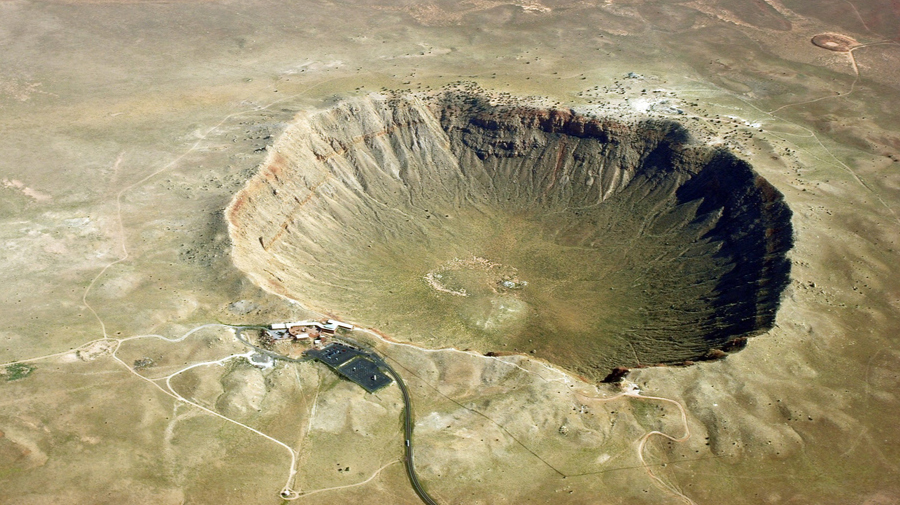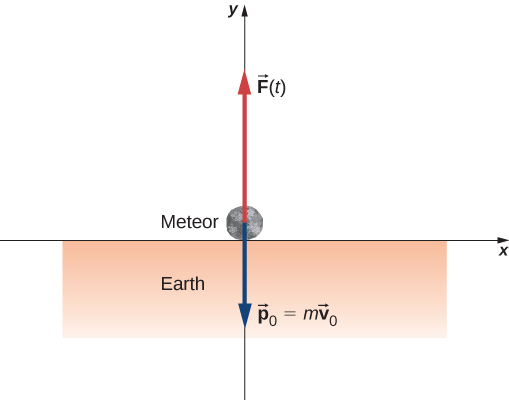| << Chapter < Page | Chapter >> Page > |
Note that the integral form, [link] , applies to constant forces as well; in that case, since the force is independent of time, it comes out of the integral, which can then be trivially evaluated.

Using the given data about the meteor, and making reasonable guesses about the shape of the meteor and impact time, we first calculate the impulse using [link] . We then use the relationship between force and impulse [link] to estimate the average force during impact. Next, we choose a reasonable force function for the impact event, calculate the average value of that function [link] , and set the resulting expression equal to the calculated average force. This enables us to solve for the maximum force.

The average force during the impact is related to the impulse by
From [link] , , so we have
The mass is equal to the product of the meteor’s density and its volume:
If we assume (guess) that the meteor was roughly spherical, we have
Thus we obtain
The problem says the velocity at impact was (the final velocity is zero); also, we guess that the primary impact lasted about . Substituting these values gives
This is the average force applied during the collision. Notice that this force vector points in the same direction as the change of velocity vector .
Next, we calculate the maximum force. The impulse is related to the force function by
We need to make a reasonable choice for the force as a function of time. We define to be the moment the meteor first touches the ground. Then we assume the force is a maximum at impact, and rapidly drops to zero. A function that does this is

Notification Switch
Would you like to follow the 'University physics volume 1' conversation and receive update notifications?